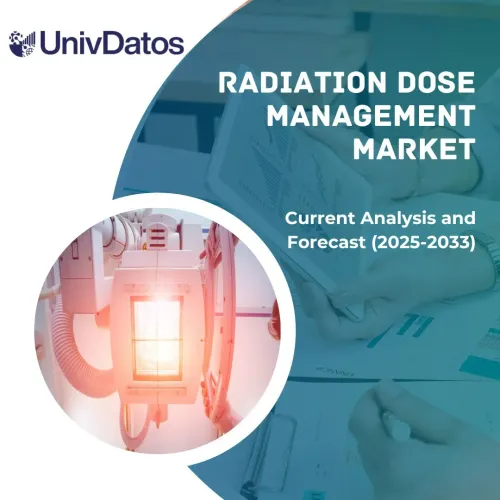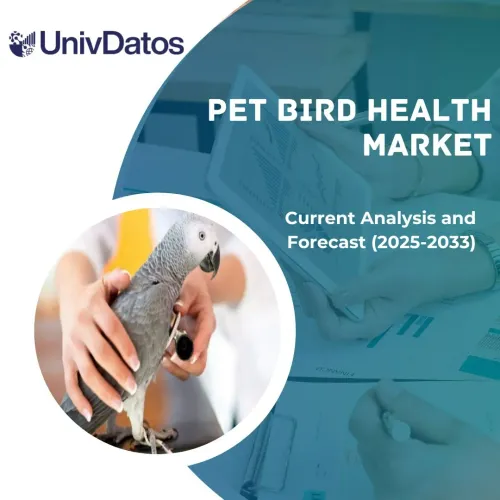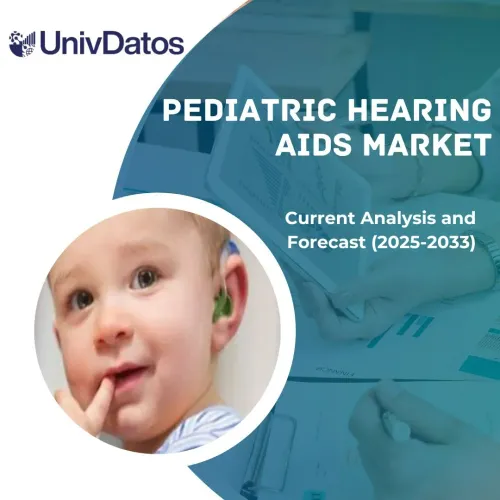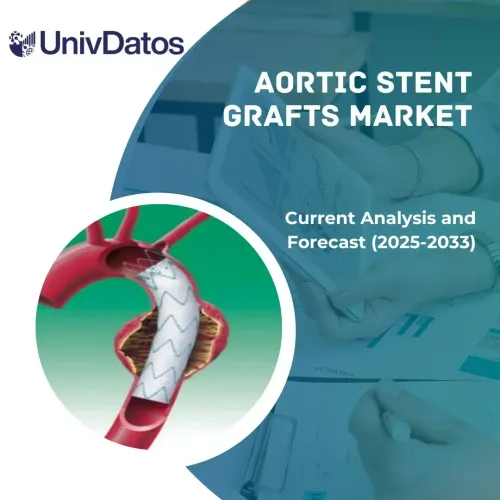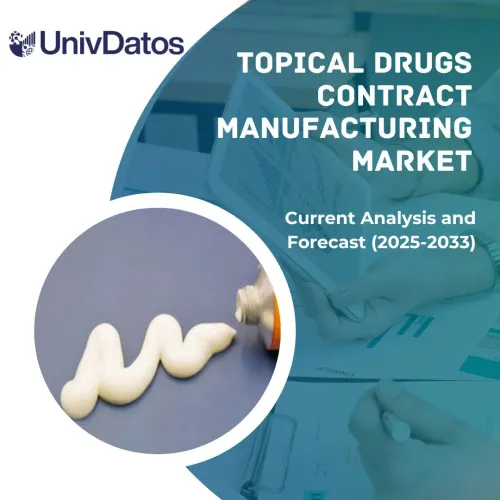- Home
- About Us
- Industry
- Services
- Reading
- Contact Us
Hemoglobin Monitor Market: Current Analysis and Forecast (2022-2028)
Emphasis on Type (Handheld, Bench Top, and Modular); End-User (Hospital, Ambulatory Surgical Centers, Specialty Clinic, Home care setting); and Region/Country
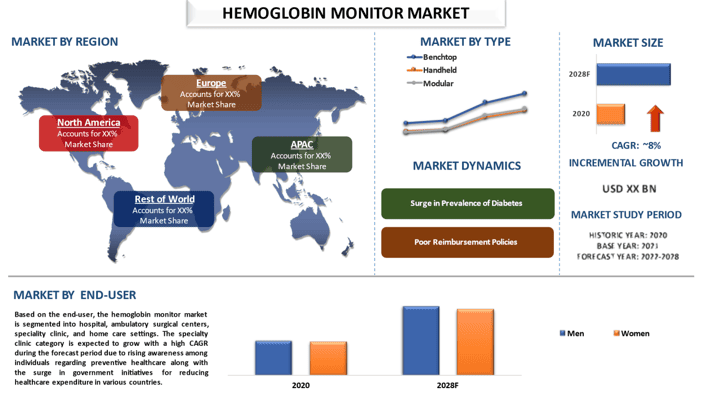
Global Hemoglobin Monitor Market is expected to grow at a significant rate of around 8% during the forecast period. A hemoglobin test determines the quantity of hemoglobin in the blood or the red blood cell (RBC) count. The RBCs include a kind of protein called hemoglobin, which transports carbon dioxide back to the lungs and oxygen to the organs. Doctors frequently utilise hemoglobin testing to diagnose patients with serious medical conditions or as part of routine checkups. An individual has a low RBC count and is at risk for diseases like anemia if a test finds that their hemoglobin level is lower than normal. The key players are rapidly launching products in the market, which is having a positive impact on the market growth during the forecast period. For instance, in May 2018, Abbott announced the launch of Afinion 2 analyzer in the U.S. The Afinion 2 analyzer is a compact multi-assay, rapid platform that simplifies and streamlines the readings of hemoglobin A1c in the human blood, thus delivering accurate results at the point of care. These strategic initiatives assisted the company to expand its hemoglobin testing device’s portfolio.
Masimo Corporation; Bayer AG; Siemens Healthineers; Welch Allyn, Inc.; Koninklijke Philips N.V; Medtronic plc; Nihon Kohden Corporation; GE Healthcare; Smith’s Group and Omron Healthcare; and Hill-Rom Holdings. are some of the key players in the market. Several M&As along with partnerships have been undertaken by these players to facilitate customers with hi-tech and innovative products/technologies.
Insights Presented in the Report
“Amongst type, tablet category to witness higher CAGR during the forecast period”
Based on type, the market is segmented into handheld, benchtop, and modular. The handheld category is expected to grow at high CAGR during the forecast period. A portable tool that measures the amount of hemoglobin in your blood is a handheld hemoglobin monitor. Two categories of portable hemoglobin meters exist: One kind of portable hemoglobin monitor takes a blood sample through finger prick. One does not need to prick one’s finger when using the other kind of handheld hemoglobin monitor. Instead, it measures the amount of hemoglobin in your blood by shining a light through your skin. The ease of equipment associated with cheap price is driving the segmental growth during the forecast period.
“Amongst end-user type, the hospitals to hold a significant share in the market in 2020”
On the basis of end-user, the hemoglobin monitor market is segmented into hospital, ambulatory surgical centers, specialty clinic, and home care settings. The hospitals held the dominant share in the market in 2020 mainly due to an increase in incidences of chronic diseases such as heart diseases, respiratory disorders, and diabetes which increases the demand for blood tests that require hemoglobin measurement.
“North America to hold a significant share in the market”
In 2020, North America held a significant share of the global hemoglobin monitor market. The presence of well-established healthcare infrastructure, rising awareness levels about the benefits offered by these devices, and favorable government reimbursement policies are some factors attributing to its large share. In addition, increasing cases of chronic diseases such as cancer and diabetes are projected to drive the demand for advanced diagnostic procedures including hematology monitoring devices.
Reasons to buy this report:
- The study includes market sizing and forecasting analysis validated by authenticated key industry experts.
- The report presents a quick review of overall industry performance at one glance.
- The report covers an in-depth analysis of prominent industry peers with a primary focus on key business financials, product portfolio, expansion strategies, and recent developments.
- Detailed examination of drivers, restraints, key trends, and opportunities prevailing in the industry.
- The study comprehensively covers the market across different segments.
- Deep dive regional level analysis of the industry.
Customization Options:
The global hemoglobin monitor market can further be customized as per the requirement or any other market segment. Besides this, UMI understands that you may have your own business needs, hence feel free to connect with us to get a report that completely suits your requirements.
Table of Content
Research Methodology for the Hemoglobin Monitor Market Analysis (2022-2028)
Analyzing the historical market, estimating the current market, and forecasting the future market of the global hemoglobin monitor market were the three major steps undertaken to create and analyze the adoption of hemoglobin monitors in major regions globally. Exhaustive secondary research was conducted to collect the historical market numbers and estimate the current market size. Secondly, to validate these insights, numerous findings and assumptions were taken into consideration. Moreover, exhaustive primary interviews were also conducted, with industry experts across the value chain of the global hemoglobin monitor market. Post assumption and validation of market numbers through primary interviews, we employed a top-down/bottom-up approach to forecasting the complete market size. Thereafter, market breakdown and data triangulation methods were adopted to estimate and analyze the market size of segments and sub-segments of the industry pertains to. Detailed methodology is explained below:
Analysis of Historical Market Size
Step 1: In-Depth Study of Secondary Sources:
Detail secondary study was conducted to obtain the historical market size of the hemoglobin monitor market through company internal sources such as annual reports & financial statements, performance presentations, press releases, etc., and external sources including journals, news & articles, government publications, competitor publications, sector reports, third-party database, and other credible publications.
Step 2: Market Segmentation:
After obtaining the historical market size of the hemoglobin monitor market, we conducted a detailed secondary analysis to gather historical market insights and share for different segments & sub-segments for major regions. Major segments are included in the report as type and end-user. Further country-level analyses were conducted to evaluate the overall adoption of testing models in that region.
Step 3: Factor Analysis:
After acquiring the historical market size of different segments and sub-segments, we conducted a detailed factor analysis to estimate the current market size of the hemoglobin monitor market. Further, we conducted factor analysis using dependent and independent variables such as various type and end-user of hemoglobin monitor. A thorough analysis was conducted for demand and supply-side scenarios considering top partnerships, mergers and acquisitions, business expansion, and product launches in the hemoglobin monitor market sector across the globe.
Current Market Size Estimate & Forecast
Current Market Sizing: Based on actionable insights from the above 3 steps, we arrived at the current market size, key players in the global hemoglobin monitor market, and market shares of the segments. All the required percentage shares split, and market breakdowns were determined using the above-mentioned secondary approach and were verified through primary interviews.
Estimation & Forecasting: For market estimation and forecast, weights were assigned to different factors including drivers & trends, restraints, and opportunities available for the stakeholders. After analyzing these factors, relevant forecasting techniques i.e., the top-down/bottom-up approach were applied to arrive at the market forecast for 2028 for different segments and sub-segments across the major markets globally. The research methodology adopted to estimate the market size encompasses:
- The industry’s market size, in terms of revenue (USD) and the adoption rate of the hemoglobin monitor market across the major markets domestically
- All percentage shares, splits, and breakdowns of market segments and sub-segments
- Key players in the global hemoglobin monitor market in terms of products offered. Also, the growth strategies adopted by these players to compete in the fast-growing market
Market Size and Share Validation
Primary Research: In-depth interviews were conducted with the Key Opinion Leaders (KOLs) including Top Level Executives (CXO/VPs, Sales Head, Marketing Head, Operational Head, Regional Head, Country Head, etc.) across major regions. Primary research findings were then summarized, and statistical analysis was performed to prove the stated hypothesis. Inputs from primary research were consolidated with secondary findings, hence turning information into actionable insights.
Split of Primary Participants in Different Regions
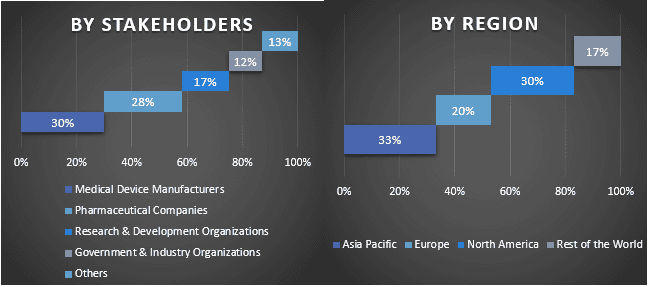
Market Engineering
The data triangulation technique was employed to complete the overall market estimation and to arrive at precise statistical numbers for each segment and sub-segment of the global hemoglobin monitor market. Data was split into several segments & sub-segments post studying various parameters and trends in the areas of product type, application, disease, and distribution channel in the global hemoglobin monitor market.
The main objective of the Global Hemoglobin Monitor Market Study
The current & future market trends of the global hemoglobin monitor market were pinpointed in the study. Investors can gain strategic insights to base their discretion for investments on the qualitative and quantitative analysis performed in the study. Current and future market trends determined the overall attractiveness of the market at a regional level, providing a platform for the industrial participant to exploit the untapped market to benefit from a first-mover advantage. Other quantitative goals of the studies include:
- Analyze the current and forecast market size of the hemoglobin monitor market in terms of value (USD). Also, analyze the current and forecast market size of different segments and sub-segments
- Segments in the study include areas of type and end-user.
- Define and analysis of the regulatory framework for the hemoglobin monitor industry.
- Analyze the value chain involved with the presence of various intermediaries, along with analyzing customer and competitor behaviors of the industry.
- Analyze the current and forecast market size of the hemoglobin monitor market for the major region.
- Major countries of regions studied in the report include Asia Pacific, Europe, North America, and the Rest of the World.
- Company profiles of the hemoglobin monitor market and the growth strategies adopted by the market players to sustain in the fast-growing market
Deep dive regional level analysis of the industry
Related Reports
Customers who bought this item also bought

